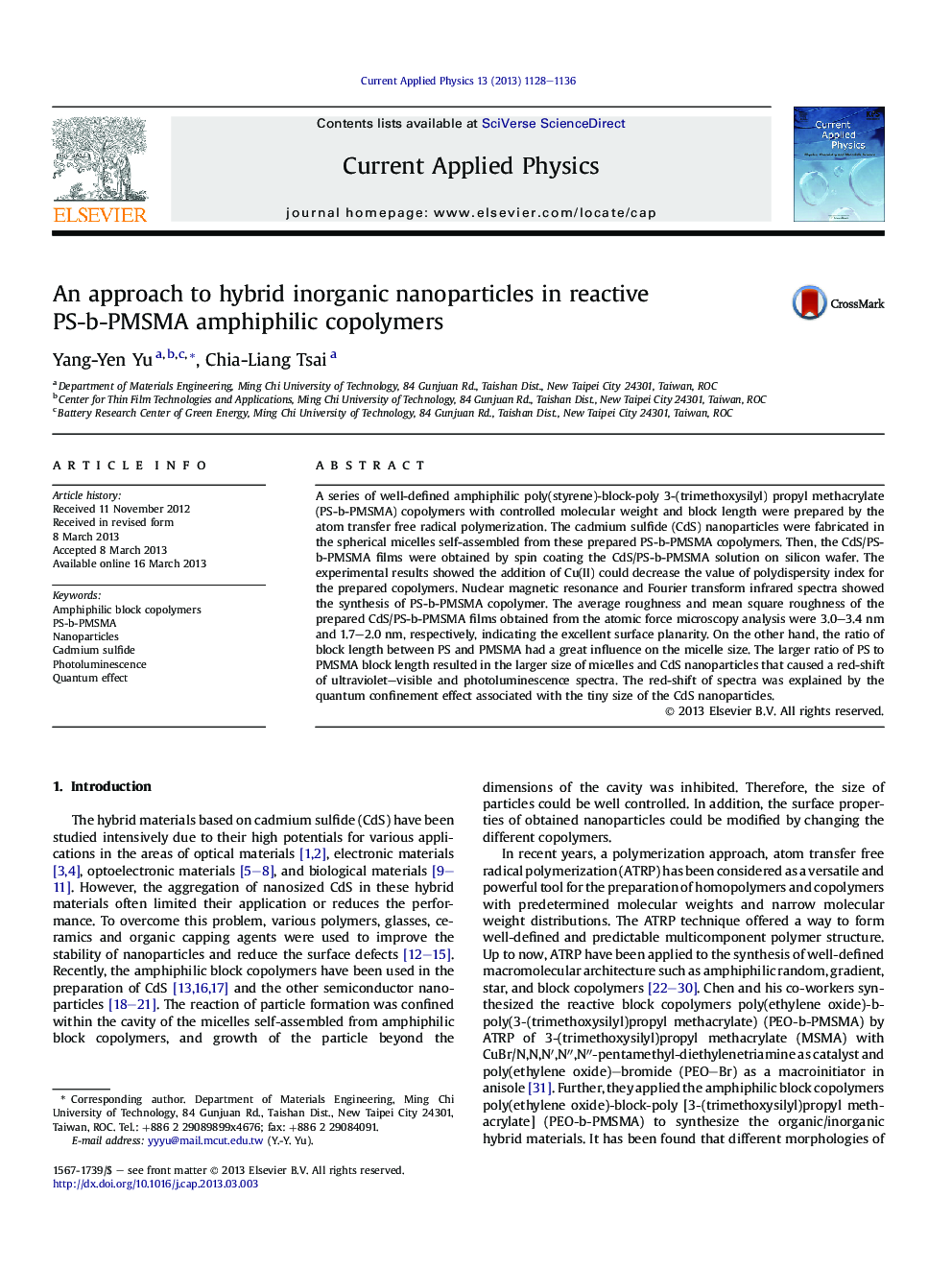| Article ID | Journal | Published Year | Pages | File Type |
|---|---|---|---|---|
| 1786407 | Current Applied Physics | 2013 | 9 Pages |
Abstract
A series of well-defined amphiphilic poly(styrene)-block-poly 3-(trimethoxysilyl) propyl methacrylate (PS-b-PMSMA) copolymers with controlled molecular weight and block length were prepared by the atom transfer free radical polymerization. The cadmium sulfide (CdS) nanoparticles were fabricated in the spherical micelles self-assembled from these prepared PS-b-PMSMA copolymers. Then, the CdS/PS-b-PMSMA films were obtained by spin coating the CdS/PS-b-PMSMA solution on silicon wafer. The experimental results showed the addition of Cu(II) could decrease the value of polydispersity index for the prepared copolymers. Nuclear magnetic resonance and Fourier transform infrared spectra showed the synthesis of PS-b-PMSMA copolymer. The average roughness and mean square roughness of the prepared CdS/PS-b-PMSMA films obtained from the atomic force microscopy analysis were 3.0-3.4Â nm and 1.7-2.0Â nm, respectively, indicating the excellent surface planarity. On the other hand, the ratio of block length between PS and PMSMA had a great influence on the micelle size. The larger ratio of PS to PMSMA block length resulted in the larger size of micelles and CdS nanoparticles that caused a red-shift of ultraviolet-visible and photoluminescence spectra. The red-shift of spectra was explained by the quantum confinement effect associated with the tiny size of the CdS nanoparticles.
Related Topics
Physical Sciences and Engineering
Physics and Astronomy
Condensed Matter Physics
Authors
Yang-Yen Yu, Chia-Liang Tsai,
